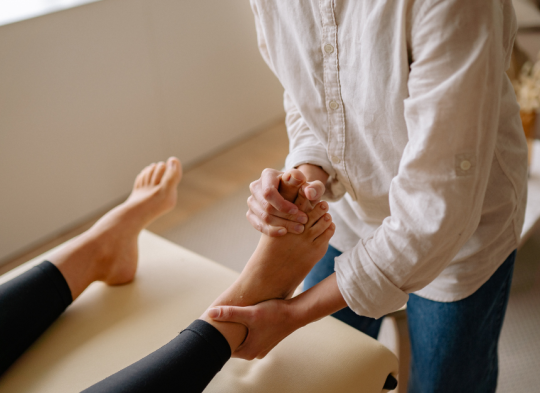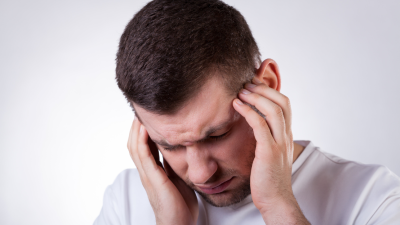For many people, their first visit to a reflexologist raises questions: how to prepare, what to expect, and whether the treatment will be painful. The article you're reading aims to dispel these concerns. It provides practical tips about how the visit will proceed, how to prepare, and what information to share with the therapist.
Good preparation for reflexology allows you to fully benefit from its potential. Whether you’re seeking support in stress reduction, better sleep, or easing chronic tension—this therapy can be a valuable complement to your daily health care routine.
Who is a reflexologist and what do they do?
A reflexologist specializes in reflex therapy, which involves manual stimulation of specific reflex points on the body—most often on the feet, hands, or face. These points correspond to various organs and internal systems. By pressing these points, reflexology supports the body's natural self-regulation processes.
A reflexologist does not diagnose or treat diseases in the medical sense. Instead, their role is to assist bodily functions by improving energy flow, reducing tension, and stimulating detoxification and regenerative processes.
Reflexology is used for:
- Reducing stress and nervous tension
- Improving sleep quality
- Relieving headaches and migraines
- Supporting digestion
- Boosting hormonal and immune systems
It’s important to emphasize that reflexology acts as a supportive practice within a holistic health approach, not as a substitute for medical care. Regular sessions can improve your well-being and overall condition, but should always complement, not replace, professional treatment.
What does the first visit to a reflexologist involve?
The initial appointment typically lasts 45 to 60 minutes and begins with a brief interview. The therapist asks about your overall health, lifestyle, stress levels, current ailments, and past illnesses. This information helps tailor the technique and understand your body's needs.
Afterward, the patient assumes a comfortable position—most often lying face up on a treatment table. For foot reflexology, the practitioner exposes your feet and begins the session. It involves pressing specific reflex points that correspond to different internal organs and systems.
The massage is performed manually, without devices, using an appropriately applied amount of pressure. It is usually painless, but some areas might be more sensitive—indicating tension in the corresponding part of your body.
During the session, you may feel warmth, tingling, deep relaxation, or sleepiness. Some people notice an improvement in well-being after just one treatment, although effects can be subtle and often accumulate with regular visits.
The session ends with a brief summary conversation, and the reflexologist may recommend how often to schedule subsequent sessions, as well as areas to observe.
How to Prepare for a Visit to a Reflexologist
Preparing for your first visit to a reflexologist is straightforward, but a few simple steps can enhance the comfort and effectiveness of the treatment. Here are practical tips to consider before your appointment:
-
Dress Comfortably
The treatment is conducted while lying down or half-lying, so wear loose, non-restrictive clothing. If the session targets your feet, choose socks that are easy to remove. -
Avoid Heavy Meals Beforehand
Have a light meal 1–2 hours before your visit. A full stomach can hinder relaxation and increase discomfort during the massage. -
Maintain Foot or Hand Hygiene
Reflexology involves physical contact, so basic hygiene is important. Wash your feet or hands before the session and avoid using strong creams or lotions that might hinder the therapist’s work. -
Avoid Stimulants Before the Visit
Coffee, energy drinks, or other stimulants can interfere with relaxation. It's best to limit their intake a few hours before the session. -
Prepare Health Information
Consider your health status, medications, past illnesses, stress symptoms, and any issues you’re seeking to address. The reflexologist may inquire about these during the consultation. -
Plan for Relaxation Post-Treatment
Your body may need some recovery time following a reflexology session. If possible, arrange for a calm period afterward—free from rushing, intensive meetings, or strenuous physical activity.
What to Inform the Reflexologist About Before the Treatment
The effectiveness and safety of reflexology largely depend on the information you provide at the start of your session. Open and honest communication allows the reflexologist to tailor the treatment to your needs and avoid potential contraindications.
-
Health Conditions and Chronic Illnesses
Inform the reflexologist about any medical diagnoses such as diabetes, heart disease, epilepsy, cancer, or neurological disorders. In some cases, technique modifications or prior consultation with a doctor may be necessary. -
Pregnancy or Suspected Pregnancy
Reflexology can be safely conducted during pregnancy, but in the first trimester, certain foot areas should be avoided. It’s crucial to inform the reflexologist about your health condition and pregnancy stage. -
Medications and Supplements
Some medications can affect how your body responds to therapy. Share information about any medications you’re taking, especially if they involve blood pressure, anticoagulants, psychotropics, or hormones. -
Allergies and Sensitivities
If you have allergies to essential oils, hygiene products, or specific substances, be sure to mention them. This helps avoid any adverse skin or respiratory reactions. -
Current Ailments and Therapy Goals
Explain what prompted your visit. Whether it's stress, headaches, digestive issues, insomnia, muscle tension, or other symptoms, this information helps the reflexologist select appropriate techniques and focus areas.
What Can You Feel After Treatment?
Your body might respond in various ways following a reflexology session. These reactions are individual and depend on your health status, tension levels, and frequency of similar therapies. Most are natural parts of the regulatory process and should not cause concern.
-
Deep Relaxation and Drowsiness
Many people feel deeply relaxed or sleepy after a session, which is a natural response to tension release and parasympathetic nervous system activation. -
Increased Thirst and a Need for Hydration
You might feel the need to drink more water after the treatment. Reflexology stimulates detoxification processes, making hydration important for effective therapy. -
Increased Excretory Function
Some clients notice more frequent urination, increased sweating, or other forms of bodily cleansing. This results from stimulating the lymphatic system and metabolism. -
Transient Discomfort
Initial sessions can sometimes lead to short-term headaches, weakness, or mild discomfort known as a cleansing response, usually resolving within a few hours. -
Improved Sleep and Well-being
After several treatments, many individuals report improved sleep quality, better digestion, increased energy levels, and reduced stress. These effects often become more apparent with regular sessions.
If intense or concerning symptoms arise, consult with the reflexologist or a doctor. In most cases, post-treatment reactions indicate the body’s natural healing mechanisms are at work.
First Visit to a Reflexologist – Summary
Your first visit to a reflexologist is a positive step towards naturally supporting health and balance. Conscious preparation, open communication with your therapist, and understanding reflexology therapy enable you to fully benefit from its potential. While reflexology does not replace medical treatment, it can be a valuable adjunct to health maintenance and recuperation—especially in times dominated by stress, fatigue, and nervous system overload.
Interested in reflexology? Schedule an appointment at our Polish clinic in London. We offer professional therapy in a peaceful setting with individualized care for each patient



